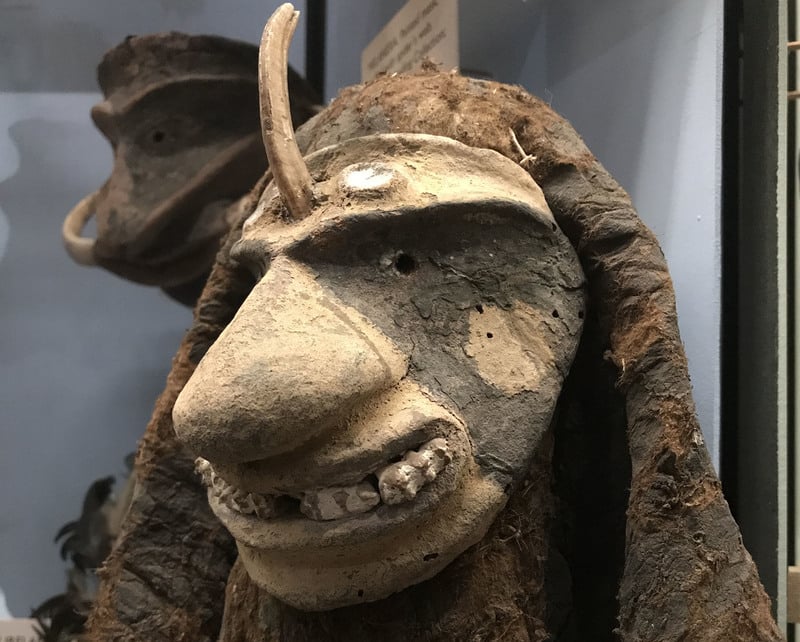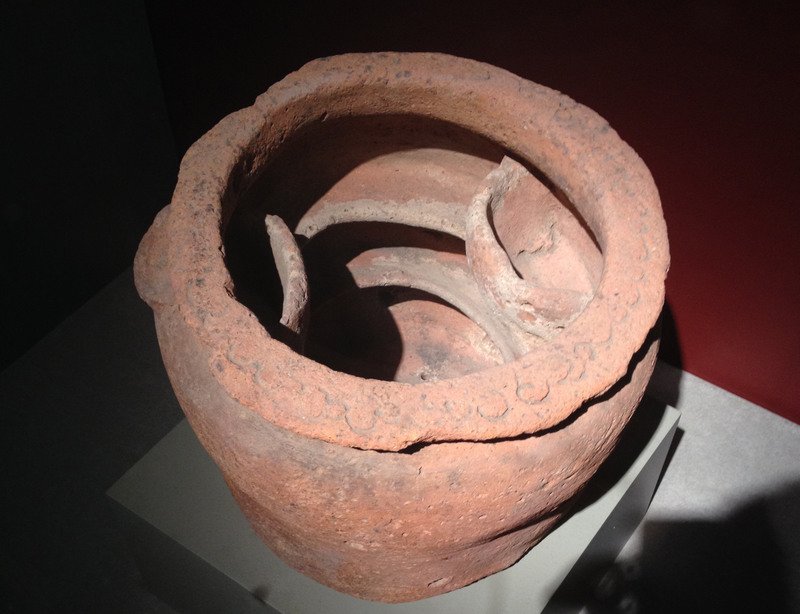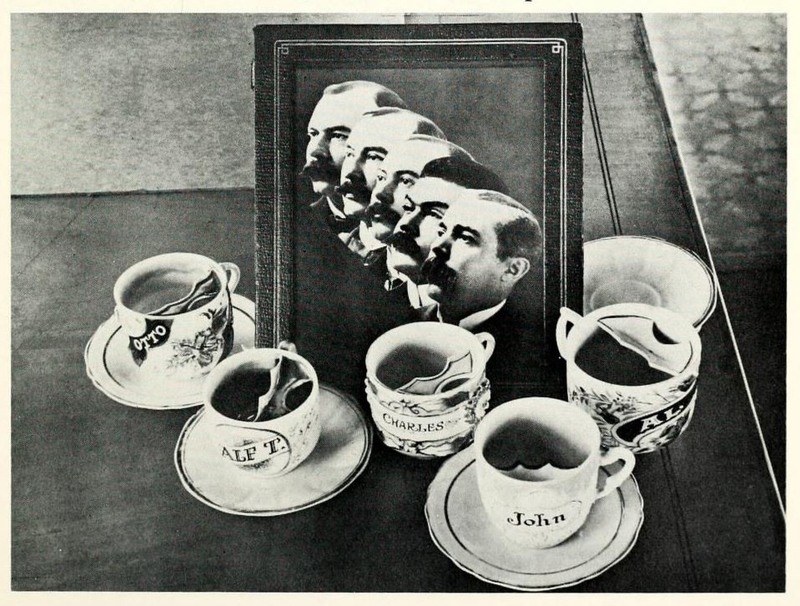What do we know about history, really? Hundreds of people devote their lives to studying this subject, but there are so many facts that sometimes it’s hard to know what’s true and what’s not. The same goes for historical objects – what was their true purpose and what were they used for? Historians and archaeologists have their guesses, but not all of them are right. In fact, years may pass before the purpose of this or that object becomes clear. Sometimes the truth is so far from anything we might have thought, that those findings become real sensations. For example, what do you know about King Charles I favorite earring? And what about special cups for gents with mustache? Here are 8 obscure historical objects and the secrets they hold.
Spider web hoods
Oxford’s Pitt Rivers Museum is home to quiet an unusual treasure – a mask from Malakula, Vanuatu. If you look past the eye-catching horn in its forehead, you’ll notice a cloth beneath it that reminds you of old felt. The truth is – it’s made of matted spider’s web! Small Malakula Island is packed with obscurities, including the traditional bounding of infant’s heads so they grow into cone-like shapes. It is also the only place in the world where the webs of Nephila, the golden orb spider, are felted together into a silky water-resistant cloth. So what were the masks used for? Some believe they were ‘smothering hoods’ used to kill off widows at their husband’s funerals, others called them ‘night caps’ or ‘caps of death’. The reality was not so sinister at all: according to Eleanor Morgan, author of Gossamer Days: Spiders, Humans and Their Threads, these masks were used during male seniority rituals in Malakula – “The longer the tail at the back of the cap, the more senior you were.”

King Charles I and his earring
Most people know Charles I as the 17th-century monarch that dismissed the English Parliament, but he was also famous for the glamorous earring he refused to part with since childhood. Charles was a fashionable man and liked all the French things, including lace collars and gorgeous broaches, so what was so special about the earring? It appears the pearl in the earring was truly huge (19 mm long) and of a rare pear shape. This thing was so precious to Charles I that he refused to take it off even during his execution! Wearing jewels was a fashionable thing to do back in the day, but King Charles surpassed all the trendsetters and kept his swagger till the very end of his life.

Rodent-fattening jars
Ancient Romans had a taste for some really peculiar foods. Not only did they eat sow’s wombs, but they also liked their rodents to be as fat as possible. In order to make the dormice dinner-ready, special containers were used. These glirariums (enclosed animal habitats in jars) were used as temporary homes for the soon-to-be-dinner rodents. Romans put acorns, walnuts, or chestnuts inside, shut the jar’s lid shut and waited for the animal to pig out. Dormice had no other choice, really, as there was nothing to do in this dark jar other than run around a little bit and eat a lot. Once the animal was thought sufficiently chubby, it was killed and cooked for the banquet. All the fish and meet at the banquet was weighed – the heavier the meat, the richer the Romans!

Cyanometer
Why would anyone want to measure the blueness of the sky? The answer is – a romantic Swiss scientist Horace-Bénédict de Saussure who was so charmed by the deep blue skies of the mountains that he wanted to measure their ‘blueness’ and explain this phenomenon. At the age of 49 he conquered the summit of the 15,774-feet Mont Blanc and used his special Cyanometer to measure the change in the sky’s color as he went higher and higher. His manometer consisted of pieces of paper colored in different shades of blue – 52 in total. Although he did measure the color of the sky from the top of Mont Blanc (it was of the 39th degree), he still couldn’t explain why the color changed with elevation. He believed that the color gradations were somehow connected to the color of moist particles present in the atmosphere, but the tool didn’t help much with his research and was soon forgotten. Martin Bricelj Baraga revived the manometer by putting a huge version of it in modern Ljubljana, Slovenia, so everyone could observe the subtle changes of the color of the sky up above.

Mustache cups
What did the 19th-century gentleman have that no man has today? Something that would keep his luxurious whiskers dry, that’s what! According to the “presents suitable for a gentleman” from the Wisconsin State Register, a special mustache cup would be a perfect present for any man of a certain age. Drinking tea for the 19th-century men was a real hazard as the hot drink melted mustache wax, making it drip right into the tea. Harvey Adams, a British potter, came up with a brilliant solution and created a special cup with a butterfly-shaped ‘secret shelf’ inside that prevented gents’ whiskers from getting all wet and gloomy. His invention was so successful that he was able to retire in just a few years!

Ancient bowling
King Henry VIII was famous for many things, mainly for beheading his wives, but he was also known as a big fan of lawn bowling. Remnants of the moat of King John’s Court manor house (including one very old bowling ball) were discovered due to the digging works done for the London’s Cross Rail project. But England is not where the bowling game was originally born. Bowling history dates back to ancient Egyptians and Romans, who used corn to stuff their leather balls that were used for the game. In England, bowling appeared no earlier than the 13th century when ‘bowling greens’ became quite a common feature in most English gardens.

The Life Awakener
Carl Baunscheidt, a German inventor, was sitting in his room one night, suffering from arthritis, when a hungry mosquito landed on his hand and bit him hard. While this was not a pleasant matter, Carl noticed that his arthritis pain went away. This is when the idea to create the Resuscitator was born. Carl Baunschneidt believed that pain (and any kind of disease for that matter) could be released through artificially created pores. Pain and poisons would literally leak through the skin! For that he proposed to use an evil-looking ebony-wood staff with 30 sharp needles hidden inside. After creating the ‘pores’ with those needles, patients were to use Oleum Baunscheidt, a special oil that created blisters just like that of insect bites. Depending on the type of disease, ill patients needed to create these ‘artificial pores’ in different parts of their bodies. It’s hard to believe, but this device actually worked for some people!

Mort-safes
Some may believe that the dead really do rest after the burial, but Edinburgh’s long history of body snatching states otherwise. No one is safe, not even after death! Back in the day aspiring and practicing physicians were short on bodies and paid handsomely to those that would provide some. This led to an increase in body snatching and as a result people had to come up with special ‘mort-safes’ to protect their departed loved ones from being stolen. Mort-safes came in various shapes ranging from heavy tombstones to iron cages that are more recognizable today. After the appalling case of Burke and Hare that lured and killed their lodgers during 1927-1928 in order to provide fresh bodies for the anatomy school, an Anatomy Act was taken to end the cadaver problem once and for all. The act made it legal for anatomists to get as many bodies as they wanted without breaking the law.

